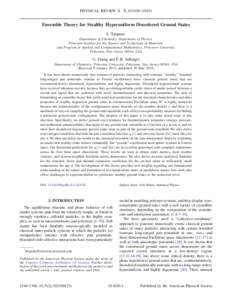<--- Back to Details
| First Page | Document Content | |
|---|---|---|
 Date: 2015-05-31 04:01:44Statistical mechanics Structure factor Temperature Fourier transform Ideal gas Physics Thermodynamics Radial distribution function |
Add to Reading List |
| First Page | Document Content | |
|---|---|---|
 Date: 2015-05-31 04:01:44Statistical mechanics Structure factor Temperature Fourier transform Ideal gas Physics Thermodynamics Radial distribution function |
Add to Reading List |